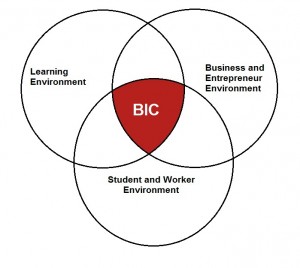Published on
Using Project-Driven Learning Formats in a Team-Based Environment (Part 1)

This is the first of a three-part series looking at the value of project-driven learning related to real-world, workplace-style situations. In this article, a problem/project-driven and team-based learning model is defined.
Introduction
Most of our learning delivery systems are inefficient, fail to motivate learners, waste scarce resources and have failed to exploit new technologies. We need to take a fresh look at our learning environment. It is not “lean.” It is broken. It needs fixing. Drop-out rates, dismal employment statistics and sluggish business development are clear evidence of its failure. It doesn’t have to be that way. It only takes a courageous educator willing to step outside of his or her comfort zone to lead the village!
We need to face the fact that effective post-secondary learning models are designed using two critically important components:
- Problem/project-driven delivery format
- Team-based learning environment
The value of these components should not come as any surprise to curriculum architects, but their implementation has seriously lagged. Much of the lag is the fear of change and of the unknown. We need the courage for creative and disruptive dialogue.
Problem/Project-Driven Delivery Format
Motivating students to learn is easier if it arises because they have an immediate need to apply the learning
A high school student approached me with a big grin on his face. He was a student worker in a bakery run by his school and told me he was given the problem of setting prices for some new products. “I now know why I need to understand algebra,” he said with great satisfaction. His grade in algebra has increased markedly over the two most recent grading periods.
A project-driven format accomplishes just what the bakery pricing assignment did for this young man. Under the guidance of a faculty advisor he had chosen courses or course modules based on a specific need to learn new knowledge or skills (e.g. pricing new products), and he had a need for its application. Once new knowledge is applied, the student moves to the next learning challenge.
Team-Based Learning Environment
We work in teams, so shouldn’t we learn in teams?
Solving business problems is rarely an individual effort. Even the simplest of situations is multi-dimensional. A team is needed and is formed accordingly. The team discusses the problem; a project plan is built, and each member takes on certain tasks. In the learning environment, to complete the project tasks, each team member needs to acquire new knowledge and skills. The team builds a learning and discovery plan and assignments are made. Team members bring what they learn back to the team to share with them. Other team members observe and participate, learning as a result. Application follows immediately and the learning and discovery cycle repeats.
A Brief Look into an Effective Learning Model
The Effective Learning Model I recommend is easily explained as the confluence of three entities:
- the learning environment
- the business and entrepreneur environment
- the student and worker environment
The integrating factor is the Business Integration Center (BIC). Figure 1 is an intuitive graphical representation of the Workforce & Business Development Center (WBDC) Model.

The WBDC Model fully and meaningfully integrates academe, students, workers, entrepreneurs and businesspersons to create a problem/project-driven and team-centric training and learning experience for all participants. Each team is typically comprised of five to six students with common career, professional development or business interests. Each team should be supported by a faculty advisor and mentor from the business community. There are three environments and the three intersections that link them are shown in Figure 1. So, the WBDC requires a village!
In Part 2 the component parts of the WBDC are described and in Part 3 the WBDC intersections are discussed in further detail to demonstrate how the WBDC works and how it meets the problem/project-driven delivery format and team-based learning environment.
This article has been excerpted from: Wysocki, Robert K., PhD. 2010, Workforce & Business Development Center: A Disruptive Innovation for Sustainable Economic Recovery, 176 pages, Worcester, MA: EII Publications
Author Perspective: Business



